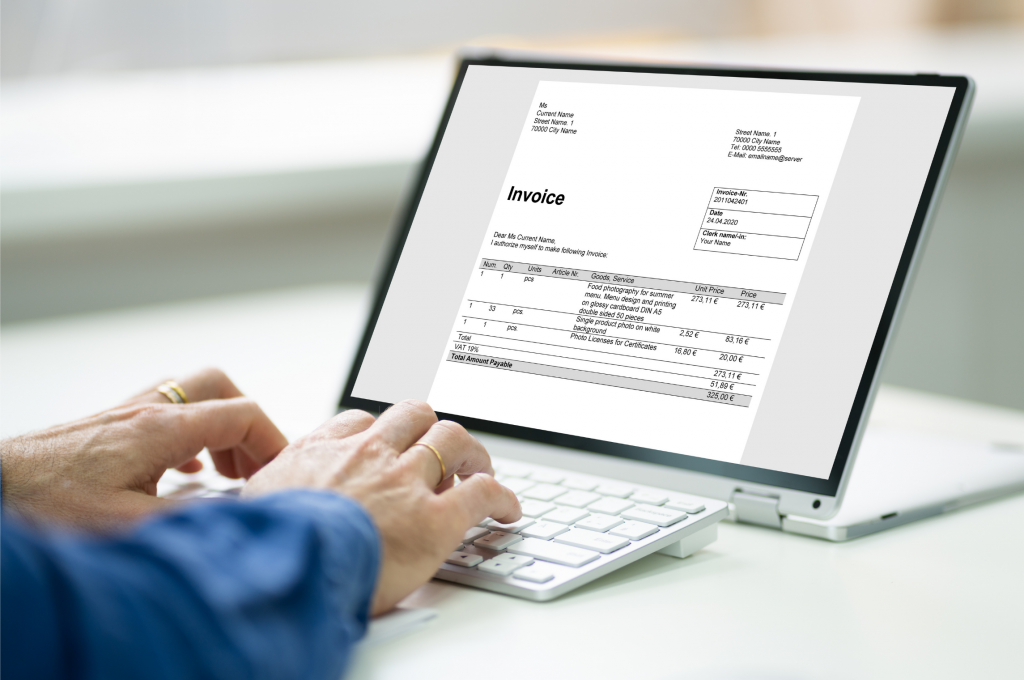What is an Electronic Invoice?
How to Track Incoming Invoices?
October 31, 2023
Electronic Invoice Approval Workflow: Everything You Need to Know
November 20, 2023In the current digital economy, electronic invoices (or e-invoices) have significantly revolutionized the way financial transactions are documented, offering increased efficiency and precision. According to market research, the global e-invoicing market was valued at $11.2 billion in 2022, projected to exceed $35.9 billion by 2028 due to its enhanced accuracy, speed, and sustainability.
But what is an electronic invoice, and what are its differences from its paper equivalent?
In order to better understand this aspect of modern commerce, let us delve deeper into its features, benefits, and wider ramifications—and get moving!
Understanding Electronic Invoices
E-invoices, a digital alternative to traditional paper invoices, are created and exchanged using formats like XML or EDI, exclusively as data files rather than tangible documents.
Digital invoices can typically be created and exchanged electronically using formats like XML or EDI (Electronic Data Interchange). What sets them apart from paper bills is their absence as tangible documents; instead, they exist solely as data files that can quickly be sent over computers or stored on online systems. For better understanding about how an e-invoice works, see this guide on electronic invoice approval workflow.

Essential Details in E-Invoices
Electronic invoices contain all of the exact essential details found on traditional paper invoices—details that are vital both legally and practically. Here is what to include when creating an e-invoice:
- Date of issued invoice: The invoice date provides essential context and timeline information about any transaction between the parties involved.
- Customer and seller data: Typically, this includes both the name and contact details of both parties.
- Purchased goods or services: A list should contain descriptions, quantities, unit prices, and total costs of each purchased good or service.
- Amount due: It includes costs related to all purchased items and applicable taxes.
- Payment due dates: These dates indicate when payments should arrive at the seller.
- Accepted payment methods: Popular choices include credit cards, bank transfers, PayPal, and checks.
- Early payment discount (if available): Many invoices include incentives such as early payment discounts to encourage timely settlement.
- Invoice number: Each invoice should have an invoice number to help keep track of transactions easily and organize records more effectively.
Pros and Cons of E-Invoices
Pros
- Cost savings due to reduced expenses and efficient resource allocation.
- Efficiency gained through automated invoicing processes.
- Improved accuracy from data entry automation.
- Faster payment processing and better cash flow management.
- Reduced environmental impact due to decreased paper usage.
Cons
- Security concerns, necessitating robust cybersecurity measures.
- Resistance to change from users accustomed to paper-based processes.
- Compliance with legal and regulatory requirements, which can be complex and vary by industry and region.
Creating an e-Invoice
Establishing electronic invoices can substantially streamline your invoicing process; however, their exact creation process depends on which software you select (see more on that below), but their basic steps remain similar:
● Inform customers of the transition
Customers must know about any transition to electronic invoicing before you switch over to ascertain that they agree and can accept receiving invoices electronically, along with ensuring you have their current and correct email addresses for delivery purposes.
● Establish electronic invoicing
For this step, choose advanced accounting software or an e-invoicing solution that enables automated invoicing with customized invoice templates that suit the unique requirements of each of your customers. Ensure your e-invoice format includes all essential information.
● Create invoices automatically
Your accounting software should ideally automate the generation of electronic invoices from sales orders, including applicable taxes or customer-specific discounts. Automation reduces risks while speeding up invoicing processes.
● Deliver the invoice
Once your e-invoice has been generated, you can distribute it to customers through any one of these methods:
- Email: Send your invoice to customers’ emails using secure and reliable delivery systems.
- Secure portals: Some electronic invoicing solutions offer secure portals where customers can log in to view and download invoices.
- Electronic Data Interchange: For businesses with complex electronic invoicing requirements, EDI provides the perfect way to send and receive invoices electronically.
Follow these simple steps, and you can generate and send e-invoices quickly and efficiently for modern businesses, saving time, resources, and the environment.
Choosing E-Invoicing Software
Selecting an efficient e-invoicing software requires consideration of features, automation, invoice format support, integration with existing systems, analytics, cost, user-friendliness, and security and compliance. GoPayable’s electronic invoicing system addresses most of these areas well.
Implementing the Software
Successful implementation of e-invoicing necessitates early customer notification, highlighting customer benefits, creating incentives, customization, providing training and assistance, pilot testing, ongoing monitoring and feedback, communication updates, and a commitment to continual improvement.
To Sum it Up
The adoption of e-invoicing presents an opportunity for businesses to enhance financial processes, encouraging sustainability and improved efficiency.
FAQs
Yes, electronic invoices may be sent to international clients and can help streamline cross-border transactions. Just ensure your e-invoicing solution supports multiple currencies and adheres to local invoicing standards in each recipient country.
To protect electronic invoices, employ encryption, access controls, and secure data storage methods. Regularly upgrade e-invoicing software to address potential vulnerabilities while following cybersecurity best practices.
If a customer requires paper invoices instead of electronic invoices, you should accommodate this preference while offering both methods as viable solutions. Establish a process to generate and mail paper invoices when requested from specific clients.
Yes, e-invoices are more Eco-friendly than paper invoices, significantly reducing paper consumption and carbon emissions from printing and mailing processes, as well as supporting sustainability efforts.
 Request a Demo: (888) 216-8880
Request a Demo: (888) 216-8880




